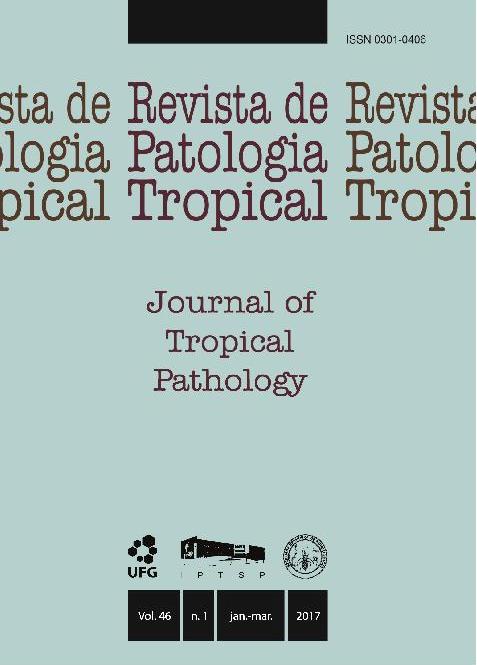SPATIAL DISTRIBUTION OF ENVENOMATION BY SCORPIONS IN PARÁ STATE, BRAZIL
DOI:
https://doi.org/10.5216/rpt.v46i1.46296Palavras-chave:
Envenomation, scorpionism, spatial distribution, scorpion sting,Resumo
Scorpionism is recognized by the World Health Organization as a neglected disease and, in Pará State, Brazil, it is considered a public health hazard. The objective of this study was to describe the spatial distribution of envenomation caused by scorpions in Pará. The data related to envenomation were collected from 2007 to 2014 and used for both descriptive and transversal studies. For those studies records obtained from ongoing investigations from the database of the National Notifiable Diseases Information System at the Public Health Department of Pará State
were used. Envenomation occurs year round, most often in the first half of the year, in males from the countryside, aged 20 to 59 years and taking up to 3 hours to reach medical care. The deaths occurred from ages 15 to 59. Regarding the severity of the cases, class I cases were the most frequent and class III cases were the least frequent, accounting for only 5.1% of all cases.
Of the 144 municipalities of Pará State, in 126 the frequency of envenomation ranged from 1 to 1,208 cases per municipality. Thirteen municipalities located in the lower Amazon region and in the southwest of Pará State presented higher occurences, including the highest number of deaths.
Scorpionism is present throughout Pará State. However, there were differences in severity and incidence in the various regions, with higher frequency in the southwest of the State and in the lower Amazon region, corresponding to the Tapajós and Guyana endemic areas in the Brazilian
Amazon.
Downloads
Downloads
Publicado
Como Citar
Edição
Seção
Licença
The manuscript submission must be accompanied by a letter signed by all authors stating their full name and email address, confirming that the manuscript or part of it has not been published or is under consideration for publication elsewhere, and agreeing to transfer copyright in all media and formats for Journal of Tropical Pathology.

